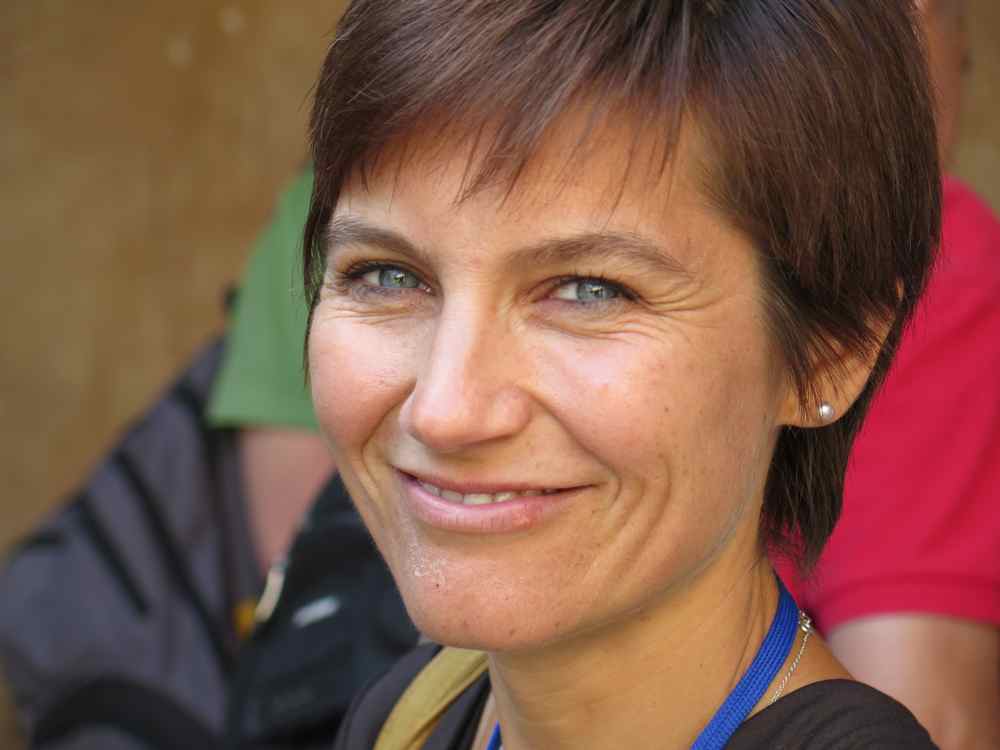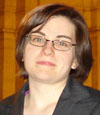Studying at the University of Verona
Here you can find information on the organisational aspects of the Programme, lecture timetables, learning activities and useful contact details for your time at the University, from enrolment to graduation.
Academic calendar
The academic calendar shows the deadlines and scheduled events that are relevant to students, teaching and technical-administrative staff of the University. Public holidays and University closures are also indicated. The academic year normally begins on 1 October each year and ends on 30 September of the following year.
Course calendar
The Academic Calendar sets out the degree programme lecture and exam timetables, as well as the relevant university closure dates..
| Period | From | To |
|---|---|---|
| I semestre | Oct 1, 2019 | Jan 31, 2020 |
| II semestre | Mar 2, 2020 | Jun 12, 2020 |
| Session | From | To |
|---|---|---|
| Sessione invernale d'esame | Feb 3, 2020 | Feb 28, 2020 |
| Sessione estiva d'esame | Jun 15, 2020 | Jul 31, 2020 |
| Sessione autunnale d'esame | Sep 1, 2020 | Sep 30, 2020 |
| Session | From | To |
|---|---|---|
| Sessione di laurea estiva | Jul 22, 2020 | Jul 22, 2020 |
| Sessione di laurea autunnale | Oct 14, 2020 | Oct 14, 2020 |
| Sessione di laurea invernale | Mar 16, 2021 | Mar 16, 2021 |
| Period | From | To |
|---|---|---|
| Festa di Ognissanti | Nov 1, 2019 | Nov 1, 2019 |
| Festa dell'Immacolata | Dec 8, 2019 | Dec 8, 2019 |
| Vacanze di Natale | Dec 23, 2019 | Jan 6, 2020 |
| Vacanze di Pasqua | Apr 10, 2020 | Apr 14, 2020 |
| Festa della Liberazione | Apr 25, 2020 | Apr 25, 2020 |
| Festa del lavoro | May 1, 2020 | May 1, 2020 |
| Festa del Santo Patrono | May 21, 2020 | May 21, 2020 |
| Festa della Repubblica | Jun 2, 2020 | Jun 2, 2020 |
| Vacanze estive | Aug 10, 2020 | Aug 23, 2020 |
Exam calendar
Exam dates and rounds are managed by the relevant Science and Engineering Teaching and Student Services Unit.
To view all the exam sessions available, please use the Exam dashboard on ESSE3.
If you forgot your login details or have problems logging in, please contact the relevant IT HelpDesk, or check the login details recovery web page.
Should you have any doubts or questions, please check the Enrollment FAQs
Academic staff
 maurizio.boscaini@univr.it
maurizio.boscaini@univr.it
 federico.busato@univr.it
federico.busato@univr.it

Cordoni Francesco Giuseppe
 francescogiuseppe.cordoni@univr.it
francescogiuseppe.cordoni@univr.it
 rosanna.laking@univr.it
rosanna.laking@univr.it

Mazzuoccolo Giuseppe
 giuseppe.mazzuoccolo@univr.it
giuseppe.mazzuoccolo@univr.it
 +39 0458027838
+39 0458027838
 franco.zivcovich@univr.it
franco.zivcovich@univr.it
Study Plan
The Study Plan includes all modules, teaching and learning activities that each student will need to undertake during their time at the University.
Please select your Study Plan based on your enrollment year.
1° Year
| Modules | Credits | TAF | SSD |
|---|
| Modules | Credits | TAF | SSD |
|---|
| Modules | Credits | TAF | SSD |
|---|
1 module between the following1 module between the following3 modules among the followingLegend | Type of training activity (TTA)
TAF (Type of Educational Activity) All courses and activities are classified into different types of educational activities, indicated by a letter.
Type D and Type F activities
| years | Modules | TAF | Teacher |
|---|---|---|---|
| 1° 2° | Python programming language | D |
Maurizio Boscaini
(Coordinator)
|
| 1° 2° | SageMath | F |
Zsuzsanna Liptak
(Coordinator)
|
| 1° 2° | History of Modern Physics 2 | D |
Francesca Monti
(Coordinator)
|
| 1° 2° | History and Didactics of Geology | D |
Guido Gonzato
(Coordinator)
|
| years | Modules | TAF | Teacher |
|---|---|---|---|
| 1° 2° | Advanced topics in financial engineering | D |
Luca Di Persio
(Coordinator)
|
| 1° 2° | C Programming Language | D |
Sara Migliorini
(Coordinator)
|
| 1° 2° | C++ Programming Language | D |
Federico Busato
(Coordinator)
|
| 1° 2° | LaTeX Language | D |
Enrico Gregorio
(Coordinator)
|
| years | Modules | TAF | Teacher |
|---|---|---|---|
| 1° 2° | Axiomatic set theory for mathematical practice | F |
Peter Michael Schuster
(Coordinator)
|
| 1° 2° | Corso Europrogettazione | D | Not yet assigned |
| 1° 2° | Corso online ARPM bootcamp | F | Not yet assigned |
| 1° 2° | ECMI modelling week | F | Not yet assigned |
| 1° 2° | ESA Summer of code in space (SOCIS) | F | Not yet assigned |
| 1° 2° | Google summer of code (GSOC) | F | Not yet assigned |
| 1° 2° | Higher Categories - Seminar course | F |
Lidia Angeleri
(Coordinator)
|
Mathematical finance (2019/2020)
Teaching code
4S001109
Teacher
Coordinator
Credits
6
Language
English
Scientific Disciplinary Sector (SSD)
MAT/06 - PROBABILITY AND STATISTICS
Period
I semestre dal Oct 1, 2019 al Jan 31, 2020.
Learning outcomes
The Mathematical Finance course for the internationalized Master's Degree ( completely taught in English) aims to introduce the main concepts of discrete as well as continuous time, stochastic approach to the theory of modern financial markets. In particular, the fundamental purpose of the course is to provide the mathematical tools characterizing the setting of Itȏ stochastic calculus for the determination, the study and the analysis of models for options, interest rates models, financial derivatives, etc., determined by stochastic differential equations driven by Brownian motion and/or impulsive random noises. Basic ingredients are the foundation of the theory of continuous-time martingale, Girsanov theorems and the Feynman–Kac theorem and their applications to the theory of option pricing with specific examples in equities, also considering path-dependent options, and within the framework of interest rates models. Great attention will be also given to the practical study and realisation of concrete models characterising the modern approach to both the risk managment and option pricing frameworks, also by mean of numerical computations and computer oriented lessons. It is important to emphasize how the Stochastic Systems course is organized in such a way that students can concretely complete and further develop their own: °ability to establish profound connections with non-mathematical disciplines, both in terms of motivation of mathematical research and of the application of the results of such surveys; ° capacity of analysis, synthesis and abstraction; ° specific computational and computer skills; ° ability to understand texts, even advanced, of Mathematics in general and Applied Mathematics in particular; • ability to develop mathematical models for physical and natural sciences, while being able to analyze its limits and actual applicability, even from a computational point of view; ° skills concerning how to develop mathematical and statistical models for the economy and financial markets; ° capacity to extract qualitative information from quantitative data; ° knowledge of programming languages or specific software.
Program
[1] Stochastic analysis: basics
Basics on stochastic processes
Stochastic processes: main examples in discrete and continuous time
Stochastic integration
The Itô-Döblin lemma
SDEs: basics with examples ( e.g.: the linear case, multiplicative noise case)
Solution of SDEs as Markov processes
Feynman-Kac formula
Girsanov theorem
Stochastic control: basics with examples (e.g.: dynamic programming principle, Pontryagin maximum principle)
[2] Discrete time models
Contingent claims, value process, hedging strategies, completeness, arbitrage
Fundamental theorems of Asset Pricing (in discrete time)
Binomial trees
Random walk and pricing
Black and Scholes formula ( derived by binomial trees analysis )
[3] Brownian Motion (BM)
review of the main properties of the BM: filtration generated by BM, martingale property, quadratic variation, volatility, reflection properties, etc.
[4] Continuous time models
Black-Scholes-Merton Equation
Evolution of Portfolio/Option Values
Sensitivity analysis
The Martingale approach
Hedging and replicating strategies
Equity market models
Siegel paradox
Packages and Exotic options
[5] Interest rates models
Markovian Models of the Short Rate
Merton model
Stochastic interest rate for the Black and Scholes model
Hedging portfolio
Change of numeraire ( also under multiple risk sources )
Caps, floors, collars
Interest rates models
Vasicek model
Cox-Ingersoll-Ross model
Forward rates modelling
Arbitrage models for term structure
Heath-Jarrow-Morton framework
The Hull-White extended Vasicek model
[6] Portfolio choice and Asset Pricing
Bachelier and Samuelson models
Utility functions
The Merton problem ( value and static programming approach)
Utility maximization problem
[7] Miscellanea
Valuation of Options in Gaussian Models
Forward LIBORs
Swap rates modelling
Mean Field Games approach to systems of interacting financial agents
Calibration for Interest Rate models
Stochastic control and financial models (e.g.: the Heston model case)
Stochastic volatility models and applications
Polynomial/asyntotic espansions for financial models
SDEs on networks with financial applications
| Author | Title | Publishing house | Year | ISBN | Notes |
|---|---|---|---|---|---|
| I. Karatzas and S. Shreve | Brownian motion and stochastic calculus | ||||
| R. Cont, P. Tankov | Financial Modelling With Jump Processes | Chapman and Hall, CRC Press | 2003 | ||
| D. Lamberton and B. Lapeyre | Introduction to Stochastic Calculus Applied to Finance | ||||
| A. F. McNeil, R. Frey, P. Embrechts | Quantitative Risk Management:Concepts, Techniques and Tools | Princeton University Press | 2015 | ||
| S. E. Shreve | Stochastic Calculus for Finance II: Continuous-Time Models | Springer, New York | 2004 | ||
| S. E. Shreve | Stochastic Calculus for Finance I: The Binomial Asset Pricing Model | Springer, New York | 2004 |
Examination Methods
Oral exam with written exercise:
the exam is based on open questions as well as on the resolution of written exercises to be solved during the test itself. Questions, open-ended and exercises, aim at verify both the knowledge about arguments developed within the course, the solution of concrete problems belonging to Mathematical Finance, and to the acquired acquaintance of associated tools of stochastic analysis.
Career prospects
Module/Programme news
News for students
There you will find information, resources and services useful during your time at the University (Student’s exam record, your study plan on ESSE3, Distance Learning courses, university email account, office forms, administrative procedures, etc.). You can log into MyUnivr with your GIA login details: only in this way will you be able to receive notification of all the notices from your teachers and your secretariat via email and soon also via the Univr app.
Double degree
The University of Verona, through a network of agreements with foreign universities, offers international courses that enable students to gain a Double/Joint degree at the time of graduation. Indeed, students enrolled in a Double/Joint degree programme will be able to obtain both the degree of the University of Verona and the degree issued by the Partner University abroad - where they are expected to attend part of the programme -, in the time it normally takes to gain a common Master’s degree. The institutions concerned shall ensure that both degrees are recognised in the two countries.
Places on these programmes are limited, and admissions and any applicable grants are subject to applicants being selected in a specific Call for applications.
It's online Erasmus + - double joint degree a.y. 2024/2025
The latest Call for applications for Double/Joint Degrees at the University of Verona is available now!
For the presentation of the LA and subsequent recognition of CFUs, please refer to the International Mobility Regulations.
Documents
| Title | Info File |
|---|---|
|
|
pdf, it, 461 KB, 24/11/23 |
|
|
pdf, it, 361 KB, 23/02/24 |
Alternative learning activities
In order to make the study path more flexible, it is possible to request the substitution of some modules with others of the same course of study in Mathematics at the University of Verona (if the educational objectives of the modules to be substituted have already been achieved in the previous career), or with others of the course of study in Mathematics at the University of Trento.Documents
| Title | Info File |
|---|---|
|
|
pdf, it, 167 KB, 27/08/21 |
|
|
pdf, it, 44 KB, 30/08/21 |
|
|
pdf, it, 113 KB, 30/08/21 |
Attendance
As stated in the Teaching Regulations for the A.Y. 2022/2023, except for specific practical or lab activities, attendance is not mandatory. Regarding these activities, please see the web page of each module for information on the number of hours that must be attended on-site.
Career management
Student login and resources
Graduation
Deadlines and administrative fulfilments
For deadlines, administrative fulfilments and notices on graduation sessions, please refer to the Graduation Sessions - Science and Engineering service.
Need to activate a thesis internship
For thesis-related internships, it is not always necessary to activate an internship through the Internship Office. For further information, please consult the dedicated document, which can be found in the 'Documents' section of the Internships and work orientation - Science e Engineering service.
Final examination regulations
Upon completion of the Master’s degree dissertation students are awarded 32 CFU. The final examination consists of a written dissertation on a specific topic agreed with a supervising professor and presented to a commission (Dissertation Committee).
The dissertation can be high-level theoretical or experimental (in the latter case, it may focus on either basic or applied research), it can deal with a theoretical topic or propose the resolution of a specific problem, or description of a work project, and may be carried out at universities, research institutions, schools, laboratories and companies in the framework of internships, traineeships, study stays in Italy and abroad. The dissertation must be original and written by the student under the guidance of a Supervisor. At the request of the student, the dissertation may be written and presented in Italian.
Professors belonging to the Mathematics Teaching Committee, the Department of Computer Science, and any associated departments may be appointed as Supervisors, as well as any professors from the University of Verona whose area of interest (SSD - Scientific-disciplinary Sector) is included in the teaching regulations of the degree programme.
Students may take the final exam only if meeting all requirements set by the School of Sciences and Engineering.
The Master's degree in Mathematics is obtained by successfully passing the final examination and thus earning the 120 CFU included in the study plan.
The material submitted by the student for the final examination will be examined by the Dissertation Committee, which comprises three professors, possibly including the Supervisor, and appointed by the President of the Teaching Committee. The final examination will be assessed based on the following criteria: the student’s performance during the entire study programme, the knowledge acquired during the dissertation work, their understanding of the topic and autonomy of judgment, their ability to apply such knowledge, and communicate effectively and fully all the outcomes of the work and the main results obtained.
The final examination and the degree ceremony will be carried out, in one of the four graduation sessions throughout the academic year, by the Final Examination Committee appointed by the President of the Teaching Committee, and made up of a president and at least four members chosen from among the professors of the University.
For further information, please refer to the Final examination regulations.
Documents
| Title | Info File |
|---|---|
|
|
pdf, it, 31 KB, 02/11/22 |
|
|
pdf, en, 31 KB, 02/11/22 |
|
|
pdf, it, 171 KB, 20/03/24 |
List of theses and work experience proposals
| theses proposals | Research area |
|---|---|
| Controllo di sistemi multiagente | Calculus of variations and optimal control; optimization - Hamilton-Jacobi theories, including dynamic programming |
| Controllo di sistemi multiagente | Calculus of variations and optimal control; optimization - Manifolds |
| Controllo di sistemi multiagente | Calculus of variations and optimal control; optimization - Optimality conditions |
| Formule di rappresentazione per gradienti generalizzati | Mathematics - Analysis |
| Formule di rappresentazione per gradienti generalizzati | Mathematics - Mathematics |
| Mathematics Bachelor and Master thesis titles | Various topics |
| Stage | Research area |
|---|---|
| Internship proposals for students in mathematics | Various topics |


























